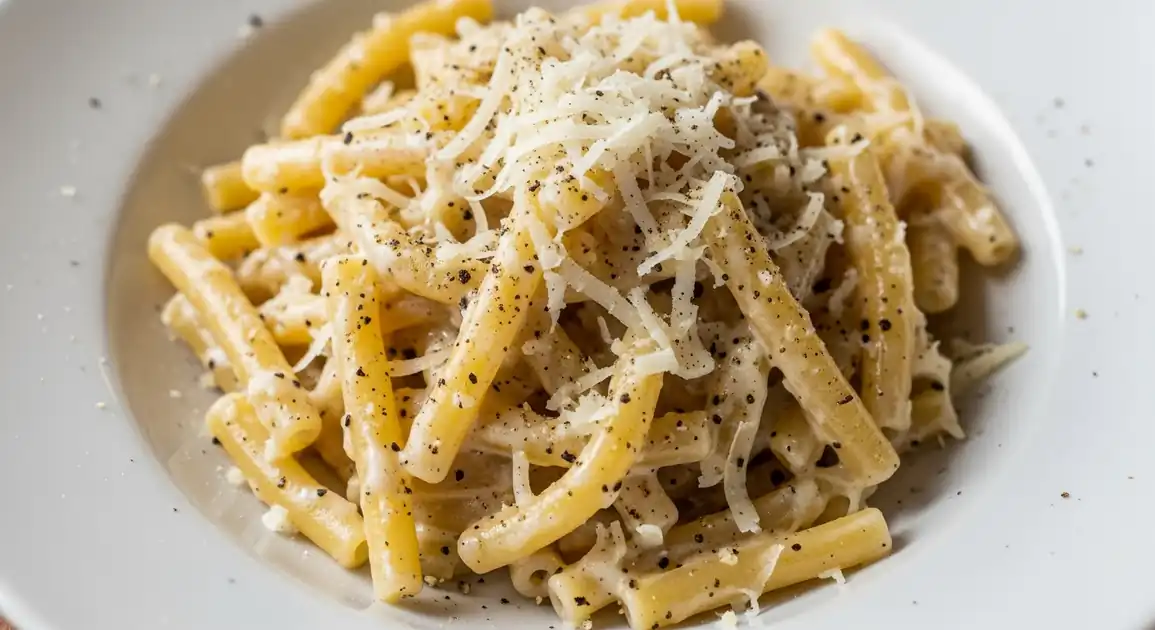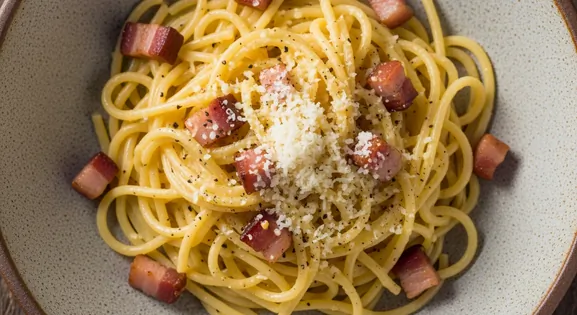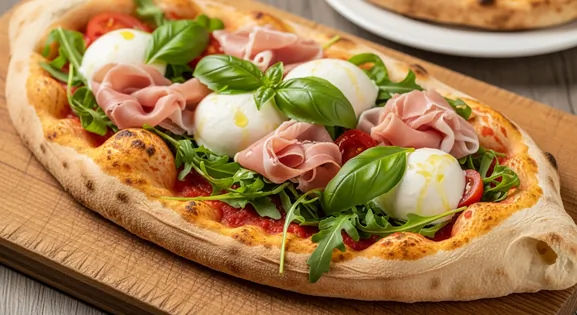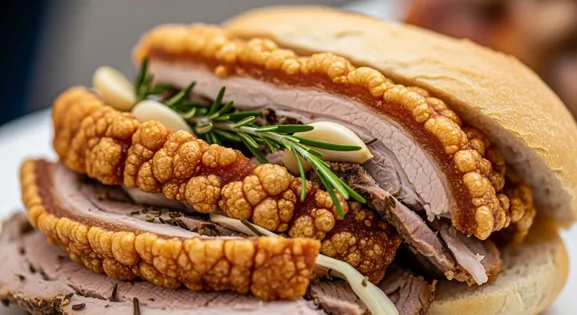Cacio e Pepe in Rome
Cacio e Pepe

The Essential Guide to Cacio e Pepe
In Rome, Cacio e Pepe isn't just pasta; it's a culinary art form. This deceptively simple dish, made with Pecorino Romano, black pepper, and pasta water, embodies Roman cucina povera. Prepare to dive into the creamy, peppery perfection that defines the city's gastronomic soul.
New to Cacio e Pepe? Learn all about its history in our complete guide.
The Role of Cacio e Pepe in Local Culture
Local Significance
Cacio e Pepe is fundamental to Roman identity. It's a test of a Roman cook's skill (achieving the perfect emulsion). Debates about the best Cacio e Pepe in Rome are passionate and endless.
Eating Customs
- Consumed hot and relatively quickly.
- Soaking up leftover sauce with bread ('fare la scarpetta') is acceptable in informal settings but less common with pasta than with meat sauces.
- Focus is on the pasta itself, minimal distractions.
Unique Preparations of Cacio e Pepe
Tonnarelli Cacio e Pepe
Using fresh, square-cut egg pasta (Tonnarelli/Spaghetti alla Chitarra) is considered by many to be the superior choice for its texture and sauce-clinging ability.
Spaghetti Cacio e Pepe
Using standard dried spaghetti is also very common and traditional.
Insider Tips for Cacio e Pepe
Many trattorias will prepare it with a slightly richer, more emulsified sauce if you ask for it 'alla Romana', indicating you appreciate the traditional style.
If a restaurant proudly features Cacio e Pepe alongside Carbonara and Amatriciana, it's a good sign they specialize in authentic Roman pasta dishes.
The best Cacio e Pepe often comes from unpretentious, family-run trattorias where the focus is solely on quality ingredients and traditional preparation.
Navigating the City for Great Cacio e Pepe
Testaccio
Historically a working-class neighborhood, now a foodie destination known for authentic Roman cuisine and excellent Cacio e Pepe.
Testaccio Market, Former Slaughterhouse (Mattatoio)
Lunchtime, Dinner
Trastevere
Charming neighborhood with numerous trattorias, ranging from tourist-focused to genuinely traditional spots serving great pasta.
Piazza di Santa Maria in Trastevere, Villa Farnesina
Lunchtime, Dinner
Prati
Neighborhood near the Vatican, offering several well-regarded restaurants serving classic Roman dishes.
Vatican City, Cola di Rienzo shopping street
Lunchtime, Dinner
Centro Storico (Historic Center)
While touristy, hidden gems and established traditional restaurants serving authentic Cacio e Pepe exist near landmarks like Pantheon and Campo de' Fiori. Research is key.
Pantheon, Campo de' Fiori, Piazza Navona
Lunchtime, Dinner
Vendor Tips
- Look for menus featuring the 'Roman trinity': Cacio e Pepe, Gricia, Carbonara/Amatriciana.
- Reservations are recommended for popular trattorias, especially for dinner.
- Don't judge a trattoria by its simple decor; often the best food is in unpretentious settings.
- Be wary of places offering dozens of pasta types; specialization is often better for classics.
An Authenticity Guide
What to Look For
-
Restaurants in Trastevere and Testaccio neighborhoods
These historic Roman districts maintain the strongest culinary traditions. Here, chefs often have decades of experience with the precise emulsification technique required for authentic cacio e pepe.
-
Visible strands of pasta coated in creamy sauce, not sitting in liquid
In Rome's climate, properly made sauce should maintain its consistency throughout your meal. If it becomes watery quickly, this indicates poor technique.
-
Local sheep's milk Pecorino Romano, visibly grated
Authentic Roman establishments use PDO Pecorino Romano from Lazio. Some quality restaurants will even show you the cheese before grating it tableside.
What to avoid
-
Cacio e Pepe served with a puddle of liquid at the bottom
In Rome's traditional preparation, the sauce should cling to the pasta. Excess liquid indicates the sauce was improperly emulsified or the pasta wasn't finished in the sauce properly.
-
Restaurants offering multiple sauce options on the same pasta
Traditional Roman trattorias specialize in specific pasta-sauce pairings. Places offering to put carbonara, amatriciana, or cacio e pepe sauce on any pasta likely don't respect authentic preparation.
-
Tourist spots near major attractions with 'cacio e pepe' prominently featured in multiple languages
In Rome, the best cacio e pepe is found in neighborhood restaurants that cater to locals, particularly in areas like Testaccio, San Lorenzo, or parts of Trastevere.
What You Need to Know
Dietary Information
Important Note for Travelers: Your safety is our priority. Below are the common allergens associated with the traditional preparation of this dish. However, recipes and ingredients can vary significantly between establishments. Always confirm all ingredients directly with the food vendor before ordering, especially if you have a severe allergy.
Potential Allergens
Dietary Suitability
Price Guide
Budget Tips
- Neighborhood trattorias away from major tourist sights often offer better value.
- Testaccio and Trastevere have many options across price points.
- Avoid places with overly aggressive touts outside.
- Check menu prices displayed outside before entering.
Serving & Seasonality
Served hot in a bowl as a 'primo'. Traditionally uses Tonnarelli or Spaghetti. Garnished simply with more Pecorino and pepper. Wine pairing is common.Best Times to Enjoy
- Lunch: A classic Roman lunch staple (12:30 PM - 3 PM).
- Dinner: Equally common and popular for dinner (7:30 PM - 10:30 PM).
Seasonal Availability
Year-round Roman classic.
The Art of Ordering
When ordering Cacio e Pepe, it's typically served as a 'primo' (first course). Don't expect to customize it; Romans consider the dish perfect as is. Pair it with a local white wine like Frascati or a light red. If you see it on a menu with many other non-Roman pasta dishes, it might be a tourist trap. Look for places specializing in Roman classics.
Practical How-To Guides
Navigating Rome's Cacio e Pepe Geography
Explore Rome's diverse neighborhoods to discover where locals truly savor this classic dish, from historic districts to hidden trattorias.
- Visit Testaccio district, particularly along Via Marmorata, where traditional working-class Roman cuisine thrives.
- Explore trattorias in the Jewish Ghetto area, known for subtle variations with slightly more olive oil in the preparation.
- Seek out small establishments in the Monti district that have been serving the same recipe for generations.
- During summer months, look for restaurants with outdoor seating in less touristy areas like San Lorenzo, where locals dine in the evening.
- Ask your accommodation host for recommendations of where they personally eat cacio e pepe - Romans are passionate about directing visitors to authentic spots.
Understanding Roman Pasta Water Techniques
Understand the crucial role of pasta water and emulsification, key techniques that elevate Cacio e Pepe to its iconic Roman status.
- Notice if the restaurant reserves pasta water carefully - this starchy liquid is essential for proper emulsification.
- Observe if the chef tosses the pasta vigorously in a circular motion - this traditional Roman technique creates the proper cream.
- Watch for the pasta being finished in a separate pan with the cheese and pepper, not simply topped with sauce.
- In cooler months (October-April), pasta should steam visibly when served, indicating proper temperature maintenance.
- Ask about the pasta type - traditional Roman cacio e pepe uses tonnarelli or thick spaghetti, which hold up better to vigorous sauce mixing.
Eating Cacio e Pepe Like a Roman
Learn the unwritten rules of enjoying Cacio e Pepe like a true Roman, from dining hours to proper pairing and etiquette.
- Dine during proper Roman hours - locals eat lunch from 1-3 PM and dinner never before 8 PM, when kitchens are most attentive.
- Order cacio e pepe as a 'primo' (first course), not as your main dish, following the traditional Roman meal structure.
- Resist adding extra cheese or other condiments - Romans consider the dish perfectly balanced as served.
- Pair with local Lazio white wine like Frascati or Colli Albani, the traditional Roman accompaniment.
- During hot summer days, many Romans seek air-conditioned establishments for pasta dishes, as heat affects both appetite and preparation.
Our Commitment to Quality
At Tasteplorers, our mission is to provide the most accurate and useful travel information in the world. To achieve this, all content on this site is created through our unique editorial framework. We utilize leading AI research tools, guided by our proprietary prompts, and a multi-stage validation process. This entire system is overseen by our editorial team to ensure everything we publish meets our high standards for accuracy, cultural nuance, and practical value for travelers.
Learn more about our Editorial Process and our Mission.
Countries
Explore regions
Europe
Discover Europe's diverse culinary landscape, from Mediterranean flavors to hearty Alpine fare. Learn to navigate markets, decode menus, and eat like a local.
Latin America & Caribbean
Discover the vibrant cuisines of Latin America & the Caribbean. Our expert guide covers everything from Mexican street food to Peruvian ceviche and market tips.
Oceania
Explore Oceania's diverse food scene. Learn about Polynesian earth ovens, Fijian feasts, and the vibrant café culture of Australia and New Zealand.
Southeast Asia
Explore Southeast Asia's diverse food cultures from Thailand to Vietnam. Get expert tips on navigating spice levels, choosing quality vendors, and understanding the rich traditions of the region.


